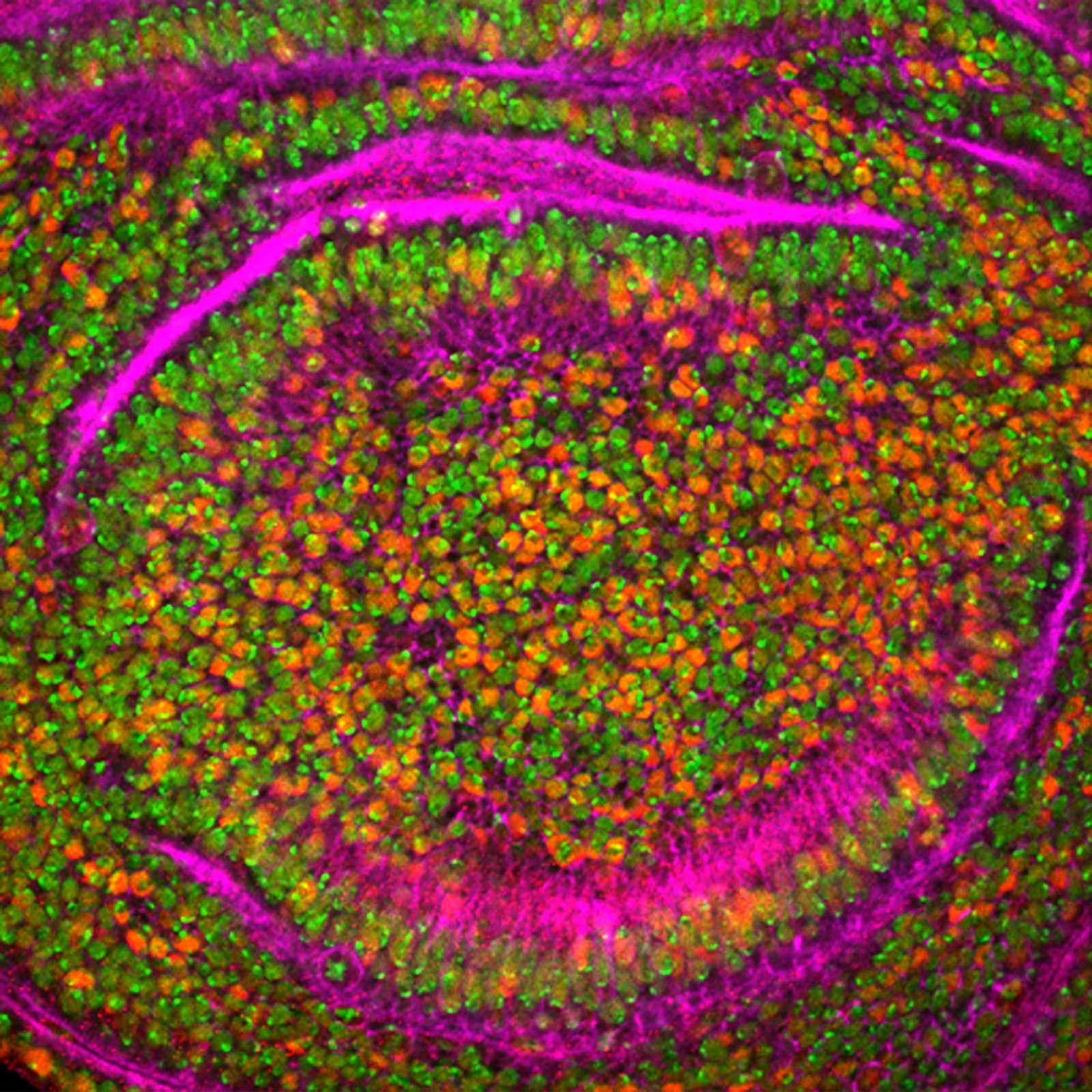Have you ever wondered about the groundbreaking advancements in the field of stem cell research and how it is revolutionizing the treatment of spinal cord injuries in Malaysia? In this article, we will explore the remarkable role of stem cells in healing and regenerating damaged spinal cords, providing hope for countless individuals who have faced the devastating consequences of such injuries. From the fascinating science behind stem cell therapy to the promising results witnessed in clinical trials, prepare to delve into the world of cutting-edge medical science that is transforming lives and offering a glimmer of hope for those living with spinal cord injuries in Malaysia.

Types of Spinal Cord Injuries
Incomplete Spinal Cord Injuries
Incomplete spinal cord injuries occur when the spinal cord is only partially damaged. This means that there is still some level of communication between the brain and the rest of the body below the site of the injury. The severity of the injury can vary, and individuals with incomplete spinal cord injuries may experience varying degrees of sensory and motor function loss. Examples of incomplete spinal cord injuries include anterior cord syndrome, central cord syndrome, and Brown-Sequard syndrome.
Complete Spinal Cord Injuries
On the other hand, complete spinal cord injuries refer to cases where the spinal cord is entirely severed, resulting in a complete loss of motor and sensory function below the level of the injury. These injuries are often more severe and can lead to significant physical disabilities and impairments. However, it is important to note that even a complete spinal cord injury does not necessarily mean a complete loss of all function below the injury site. Some individuals may still retain limited function due to the presence of spared nerve fibers.
Paraplegia
Paraplegia is a type of spinal cord injury that involves the paralysis of the lower half of the body. This typically occurs when the spinal cord is injured in the thoracic region or below. Individuals with paraplegia may experience a loss of sensation and motor function in their legs, hips, and abdomen. However, their upper body functions remain unaffected. Depending on the level and severity of the injury, paraplegics may require the use of mobility aids such as wheelchairs or braces to assist with daily activities.
Quadriplegia
Quadriplegia, also known as tetraplegia, is a type of spinal cord injury that affects both the arms and legs. This injury occurs when the spinal cord is damaged in the cervical region, typically at or above the seventh cervical vertebra. Individuals with quadriplegia may experience varying degrees of paralysis and loss of sensation in their arms, hands, trunk, legs, and pelvic organs. The severity of the injury can vary, and some individuals may retain limited function or control over certain muscle groups. However, quadriplegics generally require significant assistance and accommodations in their daily lives.
Understanding Stem Cells
Definition of Stem Cells
Stem cells are a unique type of cell that has the ability to differentiate into specialized cell types and self-renew. They are the building blocks of life and play a crucial role in the development, growth, and repair of various tissues and organs in the body. Unlike other cells that have a specific function, stem cells have the remarkable ability to develop into different cell types, such as nerve cells, muscle cells, and blood cells. This regenerative potential makes them highly valuable in medical research and potential therapeutic applications.
Types of Stem Cells
There are several different types of stem cells that can be categorized based on their origin and potential to differentiate into various cell types. These include:
-
Embryonic stem cells (ESCs): These stem cells are derived from embryos and have the highest potential to differentiate into any cell type in the body.
-
Adult stem cells: These stem cells are found in various tissues and organs throughout the body, including the bone marrow, fat tissue, and brain. They have a more limited differentiation potential compared to embryonic stem cells but are still capable of generating specialized cell types within their tissue of origin.
-
Induced pluripotent stem cells (iPSCs): These stem cells are generated by reprogramming adult cells, such as skin cells, to revert to a pluripotent state, similar to embryonic stem cells. They offer a potential alternative to the use of embryonic stem cells, as they can be generated from a patient’s own cells, reducing the risk of immune rejection.
Properties of Stem Cells
Stem cells possess several unique properties that contribute to their regenerative potential and therapeutic application:
-
Self-renewal: Stem cells have the ability to divide and self-renew, creating a continuous supply of undifferentiated cells that can differentiate into specialized cell types.
-
Differentiation: Stem cells can give rise to different cell types, depending on their environment and signals they receive from surrounding tissues and cells. This process is known as differentiation.
-
Plasticity: Some stem cells have the ability to differentiate into cell types outside of their tissue of origin, a property known as plasticity. For example, adult stem cells derived from bone marrow have been shown to differentiate into neural cell types.
-
Immunomodulatory properties: Stem cells can also modulate the immune system, potentially reducing inflammation and promoting tissue repair and regeneration.
Stem Cell Therapy for Spinal Cord Injuries
Mechanism of Stem Cell Therapy
Stem cell therapy for spinal cord injuries involves the transplantation of stem cells into the injured area to promote tissue repair and regeneration. The stem cells are typically introduced directly into the site of injury through various delivery methods, such as injection or implantation. Once in the injured environment, the stem cells can exert their therapeutic effects through several mechanisms:
-
Differentiation: Stem cells have the ability to differentiate into specialized cell types, such as neurons or glial cells, which can help replace damaged or lost cells in the spinal cord.
-
Secretion of growth factors and cytokines: Stem cells can secrete various growth factors and cytokines that promote tissue healing, reduce inflammation, and stimulate the growth of new blood vessels.
-
Immunomodulation: Stem cells have immunomodulatory properties, meaning they can regulate the immune response and inhibit inflammation, which is beneficial for spinal cord injury recovery.
-
Formation of neural networks: Stem cells can integrate into the existing neural networks and establish functional connections with surrounding cells, potentially restoring or improving neurological function.
Different Approaches to Stem Cell Therapy
There are different approaches to stem cell therapy for spinal cord injuries, each with its advantages and limitations:
-
Autologous stem cell transplantation: In this approach, stem cells are harvested from the patient’s own body, typically from the bone marrow or adipose tissue. These cells are then processed and re-implanted back into the patient’s injured spinal cord. Autologous transplantation reduces the risk of immune rejection and graft-versus-host disease.
-
Allogeneic stem cell transplantation: Allogeneic transplantation involves using stem cells derived from a different individual, typically from a donor. These cells are carefully matched to reduce the risk of rejection. Allogeneic stem cell transplantation allows for a readily available source of stem cells but carries a higher risk of immune rejection.
-
Induced pluripotent stem cells (iPSCs): iPSCs are generated by reprogramming a patient’s own cells to revert to a pluripotent state, similar to embryonic stem cells. These patient-specific stem cells offer a potentially limitless source of cells for transplantation, reducing the risk of immune rejection.
Challenges in Stem Cell Therapy
While stem cell therapy holds great promise for the treatment of spinal cord injuries, several challenges need to be addressed:
-
Optimal cell types: Identifying and selecting the most appropriate type of stem cells for spinal cord injury treatment is crucial. Different cells may have varying capabilities for differentiation and integration into the injured tissue.
-
Delivery methods: Determining the most effective and safe delivery method for stem cells is essential. Strategies such as direct injection, scaffold-based transplantation, or cell encapsulation systems need to be further investigated to optimize cell survival, integration, and functional recovery.
-
Safety and long-term effects: Ensuring the safety of stem cell therapy is of utmost importance. Long-term studies are necessary to assess the potential risks associated with stem cell transplantation, such as tumor formation, immune rejection, or immune system overactivation.
-
Standardization and regulation: Establishing standardized protocols and guidelines for stem cell therapy is crucial for ensuring consistency and reproducibility across different treatment centers. Regulatory frameworks must be developed to ensure the safety and ethical use of stem cell therapies.
Stem Cell Research in Malaysia
Overview of Stem Cell Research in Malaysia
Stem cell research in Malaysia has gained significant momentum in recent years. The country has made substantial investments in stem cell research and regenerative medicine, with the aim of becoming a leading hub for stem cell therapy and related technologies. Malaysian researchers and institutions have made notable contributions to the field, spanning both basic and clinical research.
Progress in Stem Cell Therapy for Spinal Cord Injuries in Malaysia
In Malaysia, researchers and clinicians are actively exploring the potential of stem cell therapy for spinal cord injuries. Preclinical studies using animal models have shown promising results, demonstrating the ability of stem cells to promote tissue repair, reduce inflammation, and improve motor function in spinal cord injury models.
Clinical trials have also been conducted to assess the safety and efficacy of stem cell therapy in human patients with spinal cord injuries. These trials focus on determining the optimal cell types, delivery methods, and dosage regimens. While the results are still preliminary, they provide valuable insights into the potential benefits of stem cell therapy for spinal cord injuries in a Malaysian context.
Collaborations and Partnerships
Collaborations and partnerships between Malaysian research institutions and international counterparts have played an essential role in advancing stem cell research in the country. These collaborations allow for the exchange of knowledge, expertise, and resources, fostering innovation and accelerating progress in the field. Joint research projects, sharing of data and samples, and collaborative clinical trials contribute to the collective effort to develop effective stem cell therapies for spinal cord injuries.

Clinical Trials and Success Stories
Ongoing Clinical Trials in Malaysia
Several ongoing clinical trials in Malaysia are investigating the safety and efficacy of stem cell therapy for spinal cord injuries. These trials involve the transplantation of various types of stem cells, such as mesenchymal stem cells and neural stem cells, into patients with different levels and types of spinal cord injuries. The trials assess various outcomes, including improvements in motor function, sensory function, and quality of life.
These clinical trials follow strict protocols and ethical guidelines to ensure patient safety and regulatory compliance. They provide valuable data and insights into the potential benefits and limitations of stem cell therapy for spinal cord injuries in a clinical setting.
Successful Cases of Stem Cell Therapy for Spinal Cord Injuries in Malaysia
While stem cell therapy for spinal cord injuries is still a developing field, there have been notable success stories in Malaysia. Some patients who have undergone stem cell therapy have reported improvements in neurological function, sensation, and mobility. These success stories highlight the potential of stem cell therapy to improve the quality of life for individuals with spinal cord injuries.
It is important to note that the outcomes of stem cell therapy can vary depending on individual factors such as the severity of the injury and the patient’s overall health. Successful cases serve as inspiration and motivation for further research and development of stem cell therapies for spinal cord injuries.
Regulatory Framework for Stem Cell Therapy
Laws and Regulations in Malaysia
Malaysia has established laws and regulations to govern the use of stem cells and stem cell therapies. The National Stem Cell Registry and National Guidelines for Stem Cell Research and Therapy provide a framework for the ethical and safe use of stem cell-based interventions. These regulations ensure that stem cell therapies adhere to strict standards of safety, efficacy, and patient protection.
The laws and regulations in Malaysia also aim to prevent the exploitation of patients and the unethical commercialization of unproven stem cell treatments. Compliance with regulatory requirements is essential for researchers, clinicians, and treatment centers involved in stem cell therapy for spinal cord injuries.
Ethical Considerations
Stem cell therapy raises various ethical considerations, particularly concerning the source of stem cells, informed consent, and the potential risks and benefits of treatment. In Malaysia, ethical guidelines are in place to ensure that stem cell research and therapy are conducted in an ethical and responsible manner.
Ethical considerations include the informed consent process, privacy and confidentiality of patient data, equitable access to treatment, and the avoidance of exploitative practices. Collaboration between researchers, clinicians, and regulatory bodies is essential to navigate these ethical considerations and uphold the highest standards of patient care and scientific integrity.
Importance of Regulation
Regulation plays a critical role in the safe and effective translation of stem cell therapies from the laboratory to the clinic. It serves to protect patients, ensure the ethical use of stem cell therapies, and promote public trust in the field. In Malaysia, a robust regulatory framework for stem cell therapy is essential for maintaining high standards of patient care, fostering innovation, and attracting investment and collaboration opportunities.
Regulation also helps to address potential risks and challenges associated with stem cell therapy, such as inadequate quality control, unproven claims, and the exploitation of vulnerable patients. By establishing clear guidelines and protocols, Malaysia can advance stem cell therapy for spinal cord injuries in a responsible and sustainable manner.

Cost and Accessibility of Stem Cell Therapy
Affordability and Cost-effectiveness
The cost of stem cell therapy for spinal cord injuries can vary depending on several factors, including the type of stem cells used, the number of treatments required, and the specific treatment protocols. Stem cell therapies are generally considered to be expensive, reflecting the complex and resource-intensive nature of the procedures.
However, efforts are being made to improve the affordability and cost-effectiveness of stem cell therapy. Research and technological advancements may lead to more efficient production methods, reducing the overall cost of stem cell therapies. Additionally, government support, insurance coverage, and healthcare financing options can help make these treatments more accessible to a broader range of patients.
Accessibility and Availability
The accessibility and availability of stem cell therapy for spinal cord injuries in Malaysia are influenced by various factors, including the expertise and infrastructure of treatment centers, regulatory requirements, and the availability of trained healthcare professionals.
To enhance accessibility, there is a need for the establishment of specialized treatment centers equipped with state-of-the-art facilities and a multidisciplinary team of experts. These centers should be strategically located to ensure ease of access for patients across the country. Collaboration and knowledge sharing between treatment centers can also contribute to expanding access to stem cell therapy.
Government Support and Insurance Coverage
Government support and insurance coverage play a significant role in facilitating the accessibility of stem cell therapy for spinal cord injuries in Malaysia. The government can provide funding and incentives to support stem cell research, clinical trials, and the establishment of specialized treatment centers. This would contribute to the development of expertise and infrastructure, as well as the affordability of stem cell therapies.
Insurance coverage can help alleviate the financial burden for patients seeking stem cell therapy. By including stem cell therapies in insurance plans, more individuals would have access to these treatments without facing considerable financial constraints.
Future Directions and Research Focus
Emerging Trends in Stem Cell Therapy for Spinal Cord Injuries
Stem cell therapy for spinal cord injuries is a rapidly evolving field, with several emerging trends shaping the future of research and clinical applications. These trends include:
-
Combination therapies: Combining stem cell therapy with other therapeutic approaches, such as neurorehabilitation and pharmacological treatments, can have synergistic effects and enhance the overall outcomes for patients.
-
Personalized medicine: Tailoring stem cell therapies to the specific needs and characteristics of individual patients can optimize treatment outcomes. This includes selecting the most suitable stem cell type, dosage, and delivery method based on factors such as the type and level of spinal cord injury.
-
Biomaterial scaffolds: The use of biomaterial scaffolds can provide structural support and a favorable environment for transplanted stem cells. These scaffolds can enhance cell survival, integration, and functional recovery, offering new possibilities for spinal cord injury treatment.
-
Gene-editing techniques: Advances in gene-editing technologies, such as CRISPR-Cas9, have the potential to improve the safety and efficacy of stem cell therapies. These techniques can be used to modify stem cells to enhance their regenerative potential or to correct genetic defects underlying spinal cord injuries.
Areas of Research Focus in Malaysia
In Malaysia, stem cell researchers and clinicians are focusing on several key areas to advance the field of stem cell therapy for spinal cord injuries:
-
Optimization of stem cell types: Identifying and characterizing the most suitable stem cell types for spinal cord injury treatment in a Malaysian context is a priority. This involves studying the differentiation potential, immunomodulatory properties, and integration capabilities of different stem cell populations.
-
Development of delivery methods: Improving the efficacy and safety of stem cell delivery methods is a major research focus. Researchers are exploring innovative techniques such as 3D-printed scaffolds, hydrogels, and cell encapsulation systems to enhance cell survival, integration, and functional recovery.
-
Rehabilitation strategies: Researchers are investigating the integration of stem cell therapy with rehabilitation strategies to optimize functional recovery. This includes exploring the timing and intensity of rehabilitation interventions, as well as the potential synergistic effects of combining stem cell therapy with physical therapy and other rehabilitation modalities.
-
Long-term effects and follow-up: Long-term studies are essential to monitor the effects of stem cell therapy over time and assess the durability of improvements in neurological function. Researchers are conducting longitudinal studies to gain insights into the long-term safety and efficacy of stem cell therapy for spinal cord injuries.

Patient Perspectives and Rehabilitation
Impact of Stem Cell Therapy on Patients’ Lives
Stem cell therapy for spinal cord injuries can have a profound impact on patients’ lives. For individuals living with paralysis and limited function, the potential for improved neurological function or sensory restoration through stem cell therapy offers hope and the possibility of increased independence and quality of life.
The outcomes of stem cell therapy can vary from patient to patient, with some experiencing significant improvements in mobility, sensation, and overall function, while others may notice more subtle changes. However, even small improvements can have a significant impact on a person’s daily life and psychological well-being, providing motivation and optimism for the future.
Rehabilitation Strategies
Rehabilitation plays a crucial role in optimizing the outcomes of stem cell therapy for spinal cord injuries. Comprehensive rehabilitation strategies aim to maximize functional recovery, enhance mobility, and improve overall quality of life for patients.
Physical therapy, occupational therapy, and speech therapy may be utilized depending on the specific needs and impairments of the individual. These therapies focus on strengthening muscles, improving coordination and balance, enhancing motor control, and developing adaptive strategies to overcome functional limitations.
Rehabilitation programs may also incorporate assistive devices, such as wheelchairs, braces, or prosthetic limbs, to promote mobility and independence. Psychological support and counseling are also essential components of rehabilitation, as individuals with spinal cord injuries may face emotional and psychological challenges that require specialized care.
Holistic Approach to Rehabilitation
A holistic approach to rehabilitation considers the physical, psychological, and social aspects of recovery for individuals with spinal cord injuries. It emphasizes the importance of addressing the individual’s overall well-being and quality of life, beyond the specific goals of functional recovery.
This approach involves the collaboration of a multidisciplinary team, including physicians, physiotherapists, occupational therapists, psychologists, and social workers, among others. The team works together to develop individualized treatment plans that take into account the unique needs and goals of each patient.
Through a holistic rehabilitation approach, individuals with spinal cord injuries can receive comprehensive care that addresses their physical, emotional, and social needs, ensuring the best possible outcomes following stem cell therapy.
Conclusion and Outlook
Stem cell therapy holds great promise for treating spinal cord injuries in Malaysia and around the world. The ability of stem cells to promote tissue repair, modulate the immune response, and develop into specialized cell types provides exciting opportunities for improving the lives of individuals with spinal cord injuries.
Ongoing research, clinical trials, and collaborations in Malaysia are advancing our understanding of stem cell therapy for spinal cord injuries. These efforts aim to optimize treatment protocols, enhance safety and efficacy, and ensure the ethical and responsible use of stem cell therapies.
While challenges remain, such as standardization, regulatory frameworks, and accessibility, the future of stem cell therapy for spinal cord injuries in Malaysia looks promising. Continued advancements in research, technology, and rehabilitation strategies, together with government support and public awareness, will contribute to the development of effective stem cell therapies and the improvement of patient outcomes. With dedication, collaboration, and a patient-centered approach, stem cell therapy has the potential to transform the lives of individuals with spinal cord injuries in Malaysia and beyond.





